When I set off that morning, there was no coffee shop to be found, but I was learning to do without. In fact, that whole year had been about doing without—about paring things back.
On my solo bicycle tour earlier that year, I carried everything I owned in four panniers. Sleeping gear, a little bike tent, a change of clothes, and not much more. About a week in, I began to realise the less I carried, the better I felt. I soon lightened my load until it was just what I needed to ride 100 kilometres a day. No excess, no head noise. Just the road ahead.
For the Camino, I’d read that to protect your feet, your pack should weigh no more than one-tenth of your body weight. For me, that meant about eight kilograms. So I packed light. One extra set of clothes, toiletries, basic guidebook, raincoat, sleeping bag, a camera, one litre of water, pen knife and a small canvas bag with a baguette, some cheese, maybe an orange, sometimes a little salami that I tied on the back of my pack. Most days I’d make a simple pilgrim sandwich and sit by a wall or under a tree to eat. It was enough.
My days were incredibly simple. You might call it minimalist now, but at the time, it was just how I travelled.
And I should say - this was before smartphones. 2007. The Camino hadn’t yet been hashtagged into a curated travel experience. Blogging required an internet café. I carried a little Sony-Ericsson phone I never turned on. If I needed to connect with home, I used a prepaid card at a public payphone or sent an email from a dodgy internet corner behind a bar or in a hostel.
I wasn’t recording the experience. I was living it.
I guess that’s what made it feel so meaningful. The Camino de Santiago was something physical. Real. Tangible. A linear path. A thousand-year-old tradition of movement and trust in the way forward. And because of that, it gave me a deep sense of belonging—not to any particular place, but to the Way itself. The digitalised world these days doesn’t provide the same structure. It’s fluid. Disappearing the physical.
This was 2007. Perhaps one of the last years of what you might call the old modernity. The digital world hadn’t fully claimed us yet. The pace of life was beginning to quicken, yes—but it hadn’t quite outrun meaning. Not yet. The first iPhone came out late that year.
And so, walking the Camino felt rebellious in a certain way. I wasn’t there to gain a new identity, or to “build a brand,” or even to “find myself.” I was just walking. Just being. And no one back home really knew where I was or what i was doing. They didn’t understand. That anonymity - untraceable, unmarketed, unplugged, was its own kind of freedom.
Of course, the Camino has probably changed since then. There are more books now. More gear guides. Films. Posts. But the path itself? Still the same. Still waiting for whoever shows up, willing to trust it.
And for me, solitude was the gift that made it all possible.
Back then, I hadn’t come to fear being alone. I liked it. I walked whole days without speaking to anyone, and not once did I feel the need to fill the silence. With music, podcasts or youtube videos. There’s something rich and full in being quiet for that long. Something nourishing.
I noticed more. The sky. The way the wind changed as I passed through a grove of trees. The scent of woodsmoke from a farmhouse. Gardens. The way bees lingered on the just flowing Gorse growing wild on the hillsides.
Without conversation, everything else grew louder - and somehow, more alive.
And what surprised me most was how solitude opened me to others. I listened better. I noticed small things, a tired look, a kind gesture. I smiled more easily. There was no performance. No mask. No need to impress. When I did talk to someone, it was light, real, unforced. I didn’t really have much to say.
That’s the paradox, I think: being alone didn’t make me lonelier. It made me more available for connection.
And I did connect with other pilgrims.
We were all doing our own journey. We were all different. But the Camino had a way of bringing us together when it mattered. Then letting us go again.
If you’ve ever felt like you need to get away - alone - please don’t talk yourself out of it. Don’t let the noise of the world convince you that solitude is indulgent or strange. It isn’t.
Sometimes, walking alone is how you find your place in the world again.
And from that place, still, grounded, quiet, you become better able to truly see the world. To see people.
To love them more gently.
To speak less and listen better.
To smile, for no reason at all.
Yes, of course, some days I felt lonely. There were times I craved romantic company, or just someone to talk to over dinner. My mood could swing wildly with the weather, my energy, a blister forming in a different part of my foot.
But even in those quiet aches, I was smiling more.
And in hindsight, I think I was experiencing something that goes deeper than happiness, something the ancient Greeks called eudaimonia. A kind of well-being that comes not from ease or comfort, but from being fully yourself in the life you’ve chosen.
I had chosen this walk. I had commited to it. Not many people commit to things these days.
This simplicity.
This aloneness.
And in that, I found something steady and good.
Day 7: Los Arcos to Logroño (28 kilometres)
13th April 2007
Eighteen years ago today I walked from Los Arcos to Logroño. It was the furthest I had ever walked in a single day, a long day indeed.
The morning took me through farming country again, then into the beautiful little town of Viana, just before lunch. I remember standing in front of a mural at the town’s entrance, but I don’t recall the church well, though I’m glad I took a photograph.
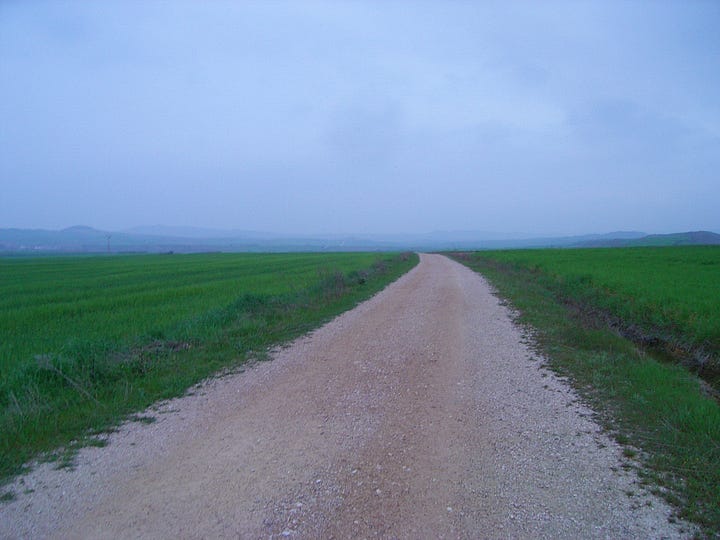
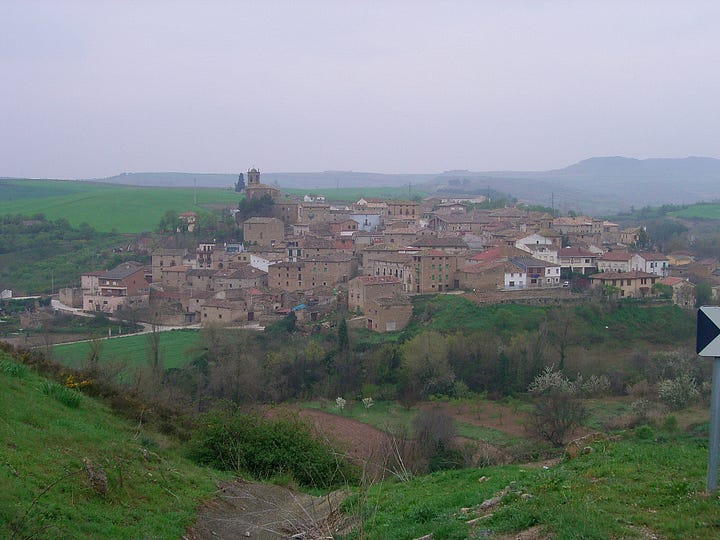
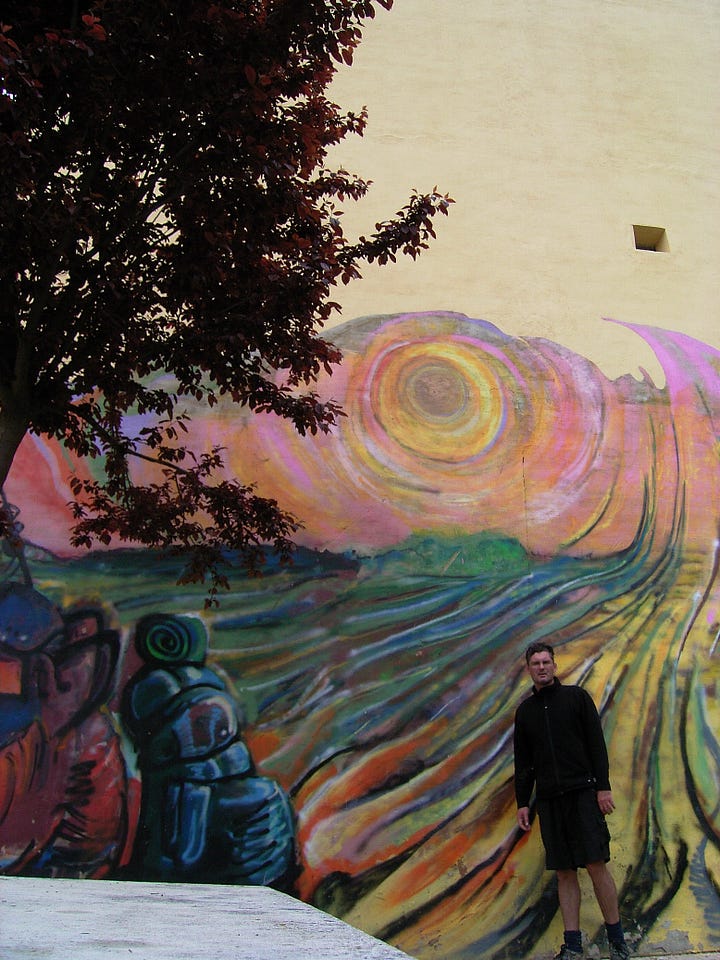
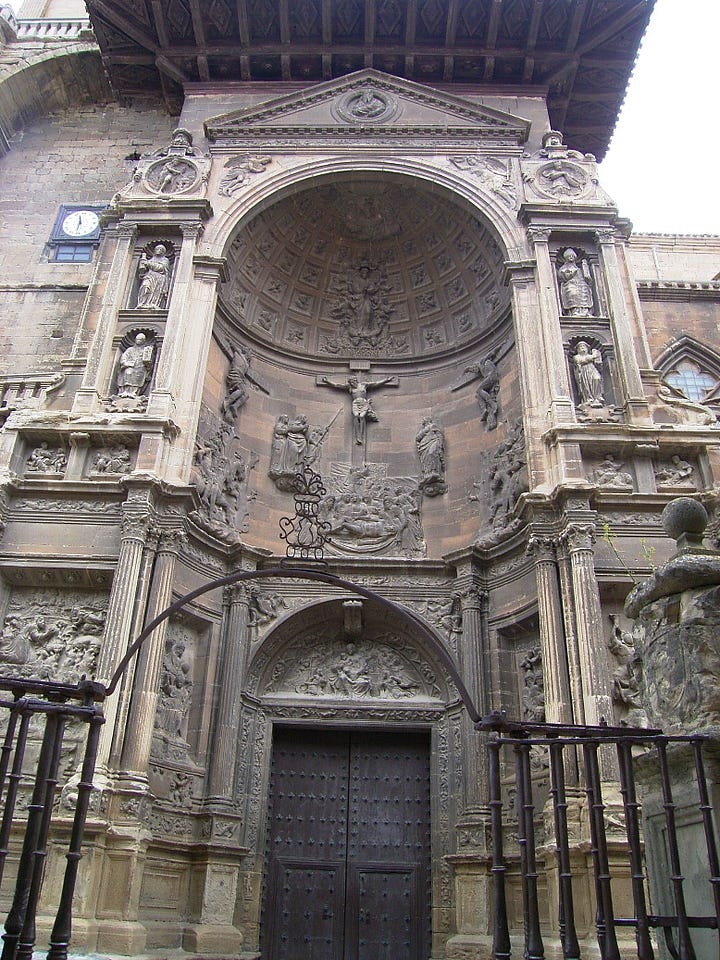
Since then, I’ve learned that the church courtyard holds the remains of Cesare Borgia, the famous Italian prince and general.
Read more about him
After Viana, the path climbed into rocky hills, where I passed dry stone huts,mysterious little structures that seemed to serve no modern purpose. The valleys were dotted with almond trees, and I walked mostly alone, except for a Korean pilgrim named Sook, who was also determined to reach Logroño that day.
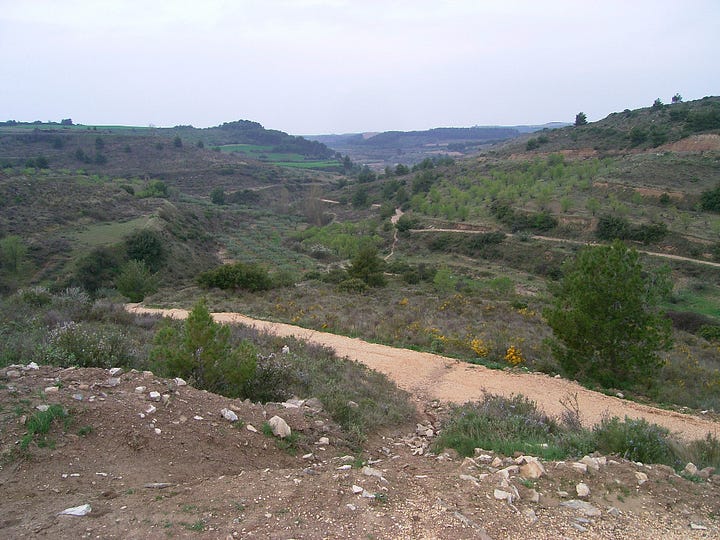
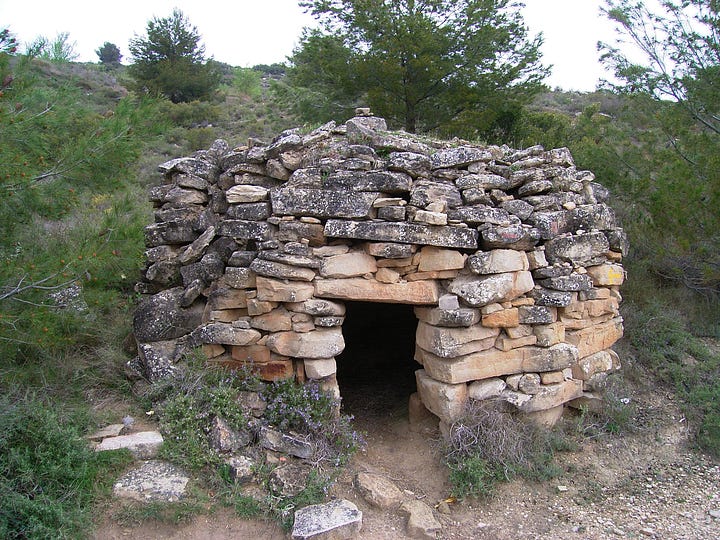
There was something about the landscape that made you want to keep walking. It reminded me of images I’d seen of the Gallipoli peninsula. Somewhere in those hills, Cesare Borgia fought his final battle against the Knights of Aragon, and died. People speak of ghosts, but I didn’t stay long enough to find out.
It’s about ten kilometres from Viana to Logroño, and if you don’t stop in Viana, there’s no choice but to keep going. When I walk 28 kilometres in a day, it’s usually because I reach a town just before lunch (20 km often took four or five hours), and after resting, I feel I can keep going another two hours.
Sometimes, this meant I’d unintentionally leave behind fellow pilgrims who had stopped earlier, who I might have just got to know. But the Camino has its own gravity, with rest days and long walks, we’d often cross paths again.
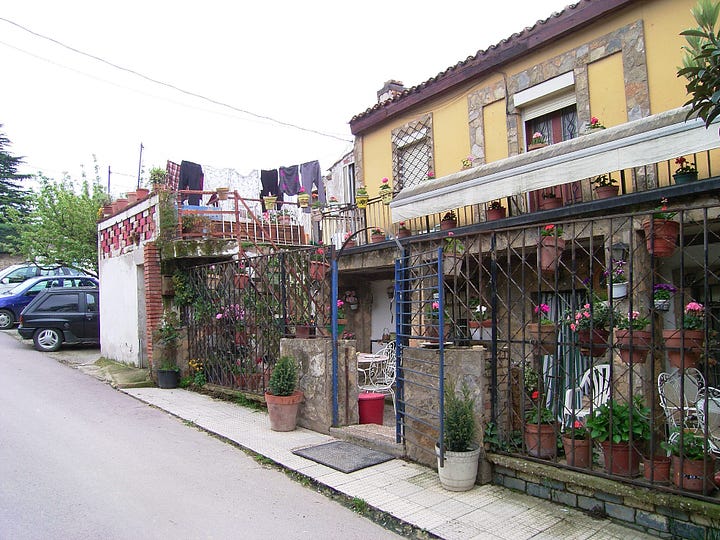
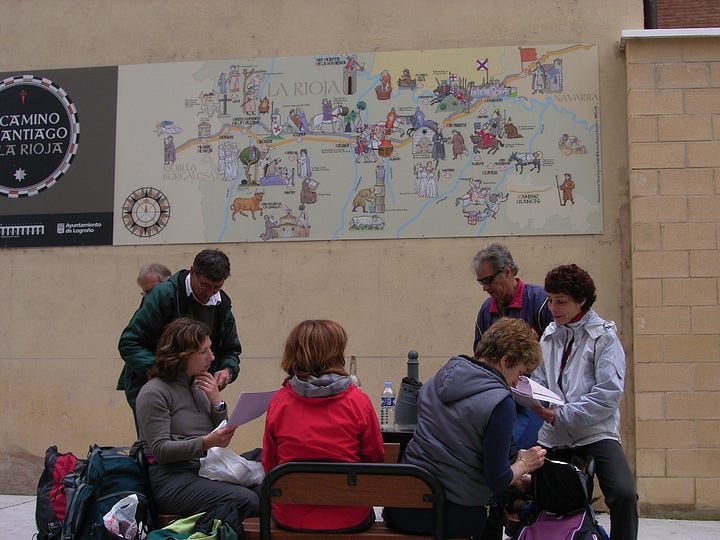
I arrived in Logroño worn out. It was a big town, and I didn’t take many photographs until the next morning. I just needed to rest.
Day 8: Logroño to Nájera (29 kilometres)
14th April 2007
I left Logroño, the capital of La Rioja, early on a Saturday morning. It was still dark, and as I made my way through the city, nightclubs were just closing. People were flowing into the streets — a few said something to me in Spanish. I just smiled and kept walking. It was just before 7 a.m.
By the time daylight arrived, I was back in the hills, walking toward Navarrete. Along the path, I passed stone prayer piles, small stacks left by pilgrims like offerings of intention, or stones of goodbyes.
Later in the morning, I passed a 12th-century Knights Templar guard post on a hill. This had once been the border between Christian and Muslim Spain, with the Moors having lived in the south and west for hundreds of years
I arrived in Nájera in the mid-afternoon and stayed at the same albergue as Tine and Sook. There were a few other pilgrims there too. We shared dinner in the common room, and I took a photo of our table. One of the pilgrims was someone I’d met briefly on Day 2, though her name escapes me. I remember she had trouble with her hips and often had to send her backpack ahead by taxi.
Nájera itself was beautiful, built under towering red sandstone cliffs, with an interesting old monastery I took a photo of.

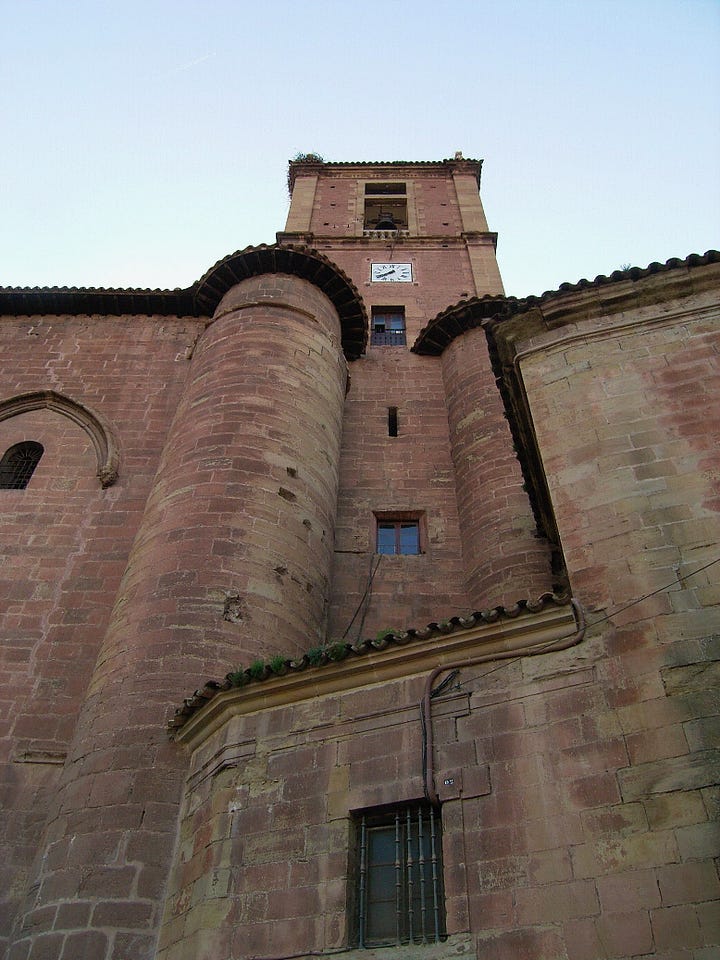
That evening, Tine and I went for a walk through town. It was a Sunday night, and Mass had just ended. We watched as local people slowly filled the streets, old couples holding hands, friends stopping to chat, children playing. It was so different from home. Where I come from, hardly anyone walks around town in the evening, or visits the local square just to say hello.










I am glad you are writing this Damian. So many beautiful memories. Makes me want to walk it again. Who knows.
I was completely lost in this. This was so beautifully written. Thank you for sharing this, Damian.